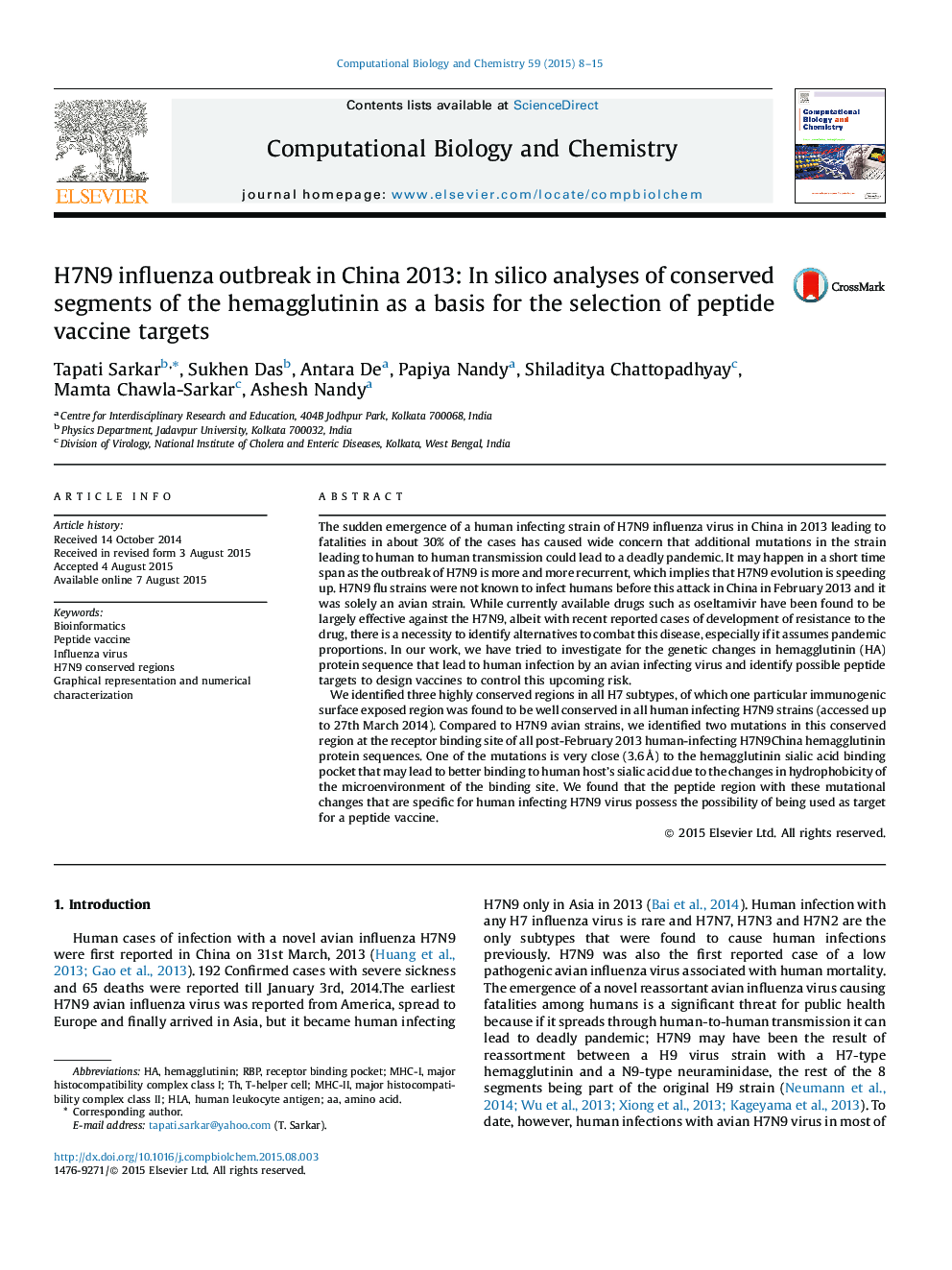| کد مقاله | کد نشریه | سال انتشار | مقاله انگلیسی | نسخه تمام متن |
|---|---|---|---|---|
| 14967 | 1365 | 2015 | 8 صفحه PDF | دانلود رایگان |

• 19 Mismatches detected in HA protein comparing sequences from prior or post H7N9 human infection.
• Among them three are conserved and present in receptor binding pocket close to the bound sialic acid.
• 14 Amino acid long surface exposed peptide region identified comprising two among three mutations.
• The region is highly immunogenic respect to B and Th cell induction with high uniqueness.
• The region is mostly conserved among other H7 subtypes and can be used as a peptide vaccine target.
The sudden emergence of a human infecting strain of H7N9 influenza virus in China in 2013 leading to fatalities in about 30% of the cases has caused wide concern that additional mutations in the strain leading to human to human transmission could lead to a deadly pandemic. It may happen in a short time span as the outbreak of H7N9 is more and more recurrent, which implies that H7N9 evolution is speeding up. H7N9 flu strains were not known to infect humans before this attack in China in February 2013 and it was solely an avian strain. While currently available drugs such as oseltamivir have been found to be largely effective against the H7N9, albeit with recent reported cases of development of resistance to the drug, there is a necessity to identify alternatives to combat this disease, especially if it assumes pandemic proportions. In our work, we have tried to investigate for the genetic changes in hemagglutinin (HA) protein sequence that lead to human infection by an avian infecting virus and identify possible peptide targets to design vaccines to control this upcoming risk.We identified three highly conserved regions in all H7 subtypes, of which one particular immunogenic surface exposed region was found to be well conserved in all human infecting H7N9 strains (accessed up to 27th March 2014). Compared to H7N9 avian strains, we identified two mutations in this conserved region at the receptor binding site of all post-February 2013 human-infecting H7N9China hemagglutinin protein sequences. One of the mutations is very close (3.6 Å) to the hemagglutinin sialic acid binding pocket that may lead to better binding to human host’s sialic acid due to the changes in hydrophobicity of the microenvironment of the binding site. We found that the peptide region with these mutational changes that are specific for human infecting H7N9 virus possess the possibility of being used as target for a peptide vaccine.
Figure optionsDownload as PowerPoint slide
Journal: Computational Biology and Chemistry - Volume 59, Part A, December 2015, Pages 8–15